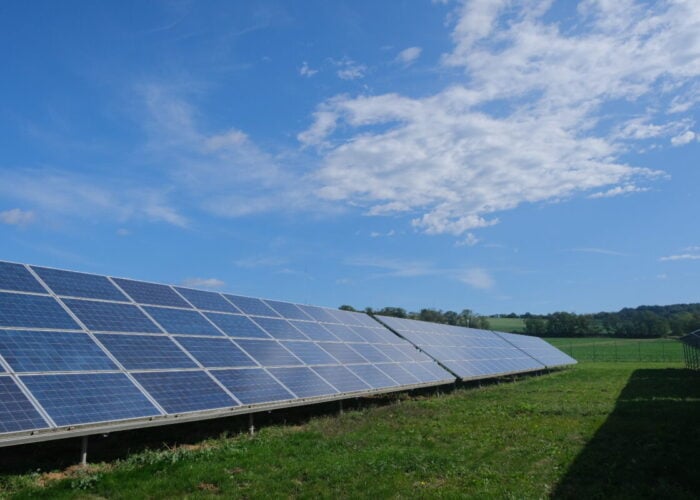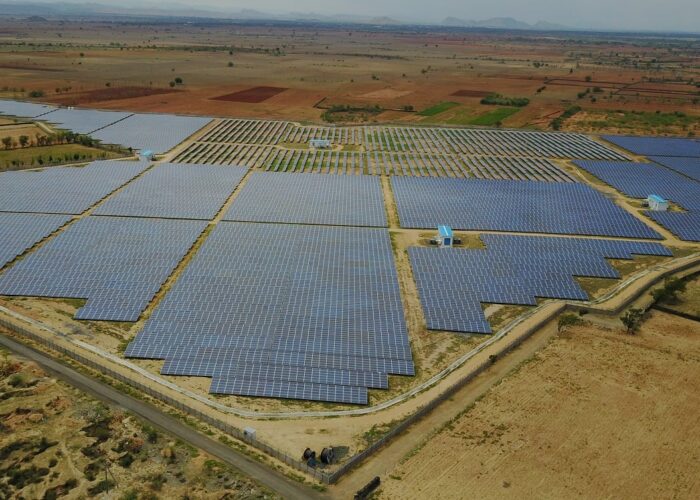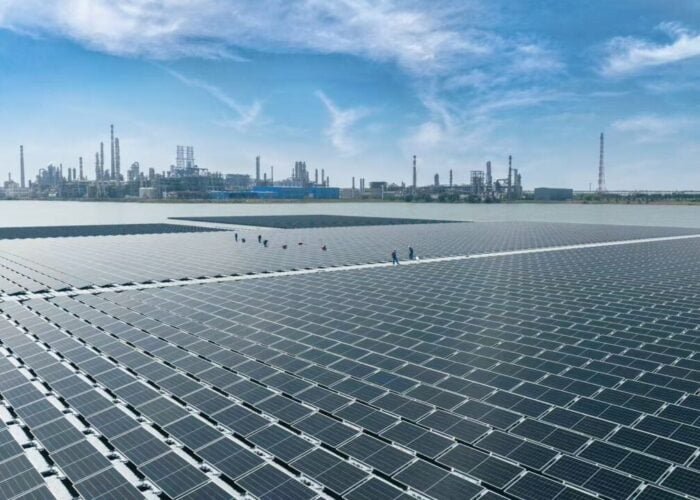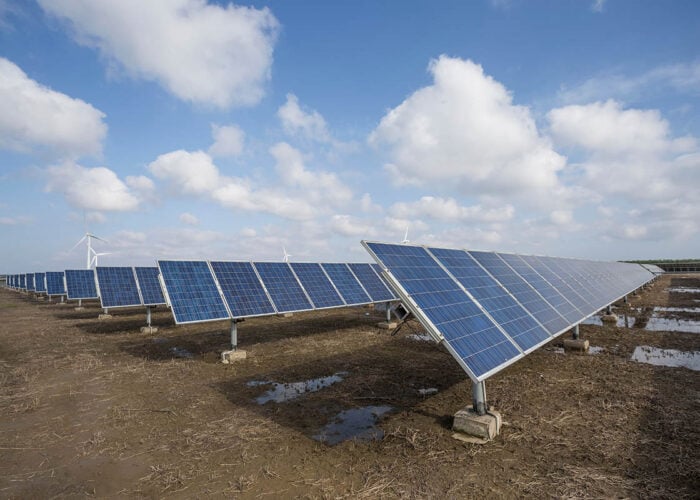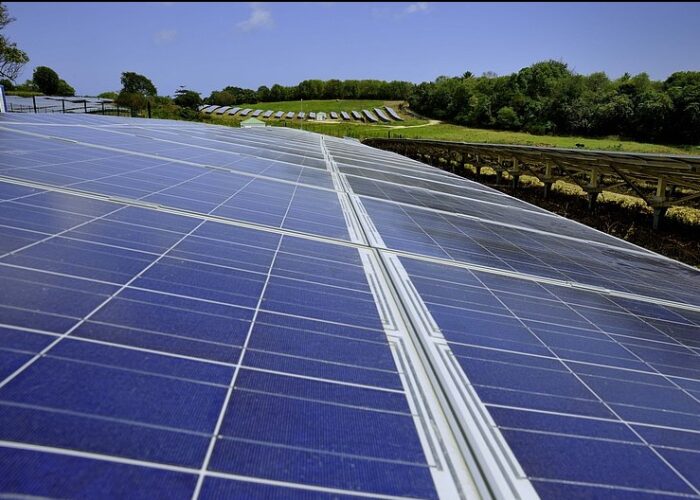As regular readers of the site will have seen already, PV Tech was at Tokyo's PV Expo last week. Japan has been relatively ambitious with regards to solar for many years, even ahead of the introduction of the feed-in tariff (FiT) in July 2012. Thin-film manufacturer turned vertically integrated solar services provider Solar Frontier, for instance, was established as a subsidiary of petrochemical company Showa Shell in response to the OPEC oil price shock of the 1970s.
The boom that came with the introduction of the feed-in tariff (FiT), however, turned this primary focus on R&D into the development of enough gigawatts of utility-scale PV to put Japan in the top two or three solar nations on the planet in terms of deployment.
Unlock unlimited access for 12 whole months of distinctive global analysis
Photovoltaics International is now included.
- Regular insight and analysis of the industry’s biggest developments
- In-depth interviews with the industry’s leading figures
- Unlimited digital access to the PV Tech Power journal catalogue
- Unlimited digital access to the Photovoltaics International journal catalogue
- Access to more than 1,000 technical papers
- Discounts on Solar Media’s portfolio of events, in-person and virtual
Much has been made of the grid connection and land shortage issues now facing utility-scale solar in particular, not least by PV Tech. There is an understanding that once the currently existing pipeline of projects is deployed, Japanese utility-scale PV, or megasolar as it is known in the country, will cease to go ahead in any significant numbers. That said, the pipeline stands at more than 50GW, which is a lot of solar in anyone's book. Project investment and project rights trading are keeping the megasolar sector busy along with actual construction and design activities.
Beyond that, of course, it will be all about the diversification of the maturing industry, whether Japan's commercial rooftop sector will pick up where megasolar left off, and whether Japanese households will keep installing their own systems. The former remains to be seen, while the forthcoming energy market deregulation process and the activities of both solar energy services companies and their partners in the house construction industry could drive the latter to new heights.
Here is a run down of some of the key trends PV Tech observed and investigated at the show.
Energy market liberalisation cannot come soon enough, according to a multitude of commentators – but it probably won't.
Canadian Solar chief executive and president, Shawn Qu, told PV Tech last week of his hope that energy market liberalisation could be a game changer and a resurrecting force for solar in Japan. His view echoes that of a number of others PV Tech spoke with, both at the show and before it. However, with the process pencilled in to begin in earnest next year, there remains healthy scepticism that it will happen smoothly or quickly. This is due to the fact that it is undoubtedly a complex and laborious process. It is also said, however, to be in part due to powerful lobbying from utilities and heavy industry groups. It remains to be seen if Japan, a country where the line between politics and business are often rumoured to be somewhat blurred, can really push on and liberate its electricity consumers and producers to buy and sell power freely.
Chinese vertically integrated PV manufacturers' interest in Japan is far more than just a flood of cheap panels
In addition to Canadian Solar’s Shawn Qu, PV Tech also spoke with representatives and directors of other tier-one Chinese PV manufacturers, including Trina Solar and JA Solar. Each company is offering modules, of course, but in many instances they are often also marketing, or looking to start marketing, a broader range of energy services and products than that, including HEMS and project development.
However, while Japan has relaxed its stance on accepting the mass import of panels and other equipment from China, the country remains no less conscious of quality. Another Chinese maker, HT SAAE, was showcasing new bifacial n-type PERT mono-crystalline PV modules. While the R&D end of the solar business has floundered in Europe and North America, companies like HT SAAE, which is actually an offshoot of China's space programme, are still able to drive capital investment into their PV labs.
While Japan is less suspicious of foreign imports than ever before, it was clear from the show that only top tier manufacturers are likely to enjoy continuing high levels of demand there.
Durability is the key differentiator for panel suppliers
As the last point implies, there is a growing sense that Japanese manufacturers are unlikely ever to be able to compete with China on scale of PV cell production – who can? Japan has long favoured domestic brands, both at the consumer and commercial level. It is not uncommon for Japanese customers to remain loyal to local brands for many years even though they are paying more for the privilege of doing so.
Yet demand for solar cells and finished modules far outweighs the available supply from Japanese makers. Coupled with post-2008 global downturn economics, suppliers of PV and PV equipment in Japan, both local and foreign, were doing their best at the show to prove their products will last longer and stay stronger than their rivals'. Warranty periods are getting longer and longer, while several exhibitors at the PV Expo were showing off the hardiness of their panels in various novel ways, from Solar Frontier's R&D-level flexible thin-film module, which can take a remarkable amount of abuse without tearing or breaking, to the soccer 'penalty shootout' another maker's panels were subjected to.
Luckily none of these displays backfired while PV Tech was in the vicinity…
While energy storage may well take off in Japan, it will take its time and it will emerge gradually from the residential sector
Smart homes and home energy management system (HEMS) technologies have been in existence in some form or another for several years and Japan has been particularly keen to foster their development. Technologies have rapidly progressed, meaning that in theory the homeowner of the future's rooftop and EV battery could be among the most vital components of their daily energy usage. But this scenario will require upfront costs to fall further than they already have, continuing policy support and public acceptance of the technology.
Almost all of the vertically integrated PV companies, both Japanese and international, have products either preparing for launch or already on the market that cater for HEMS applications. Once again, energy market deregulation is a key factor in this interest.
At this stage, scaling up production of residential energy storage technologies and making them widely accepted by the general public could be considered key priorities for the energy storage sector in Japan. Japanese companies and their international counterparts appear ready to embrace the challenge.
Japan's closed shop industry could turn its interests outward
There has been a perception – and it is by no means an entirely mistaken one – that Japanese industry, including PV, can be something of a 'closed shop' to outsiders. It would be fair to say that probably around 60% or 70% of the expo and conference was aimed squarely at the Japanese domestic industry, with Japanese companies exhibiting to other Japanese companies, but big names from the international scene are also clearly interested in the region. From the obvious presence of Chinese tier-one manufacturers, developers such as Conergy and big names in inverters and related balance of system (BOS) manufacturers such as SMA and Solaredge were also hosting prominent and large booths at the show. US-based rooftop mounting systems specialist, Zep Solar, was showing off its product partnership with mammoth Japanese trading company and project investor Marubeni. From conversations with Japanese project developers and investors, it was obvious that with PV panels at all-time low prices and falling, BOS is an increasingly important factor in costs as Japan reaches the final stretch of the FiT era.
Another interesting implication of Japan's industry opening its doors is that as the 50GW FiT pipeline gradually clears, Japanese project developers, having raced up a steep learning curve since 2012 – and in some cases before then – will increasingly look to use their acquired know-how to develop projects elsewhere in the world. Recent unconfirmed reports of Softbank's Indian ambitions could be a taster of things to come, although at this point it must be stressed that this remains a speculative opinion backed by furious hinting.
Nuclear fears turn to confusion
Finally, the energy topic that everyone – solar industry participant or not – knows about with regards to Japan is of course the nuclear issue. It was not quite the elephant in the room that one might have expected during PV Expo. In other words, although virtually all of the individuals PV Tech spoke to about the subject did so on condition of anonymity, or stressed that they were talking strictly as private individuals rather than as company representatives, many were willing to voice an opinion.
On the one hand, those of a technically minded nature generally said they saw the restart of at least some of Japan's 50 or so nuclear power stations this year as inevitable and an economic necessity. Some also pointed out the irony that nuclear, as a low emissions technology, could help Japan meet targets ahead of the Paris climate talks.
Yet it was also said by some, but by no means all of PV Tech's sources, that a deep sense of confusion bordering on mistrust exists over the issue. Electric utilities are keen to see nuclear come back online, some have said, because they are haemorrhaging money to import fossil fuels in the short term. From a business perspective this is clearly understandable, although the darker implication is that, as is the case elsewhere, the social and long-term financial costs of nuclear energy will most likely be underwritten by the general public.
The Japanese government appears keen to establish stronger economic and cultural links with the international community than ever before. Not only for the sake of its own population's peace of mind, but also in terms of its international standing, the government and its domestic industrial partners must establish a clear and transparent dialogue on nuclear.
Further insight and analysis of Japan's PV market, present and future, can be found in the latest issue of PV Tech Power. Click here to subscribe for free.

